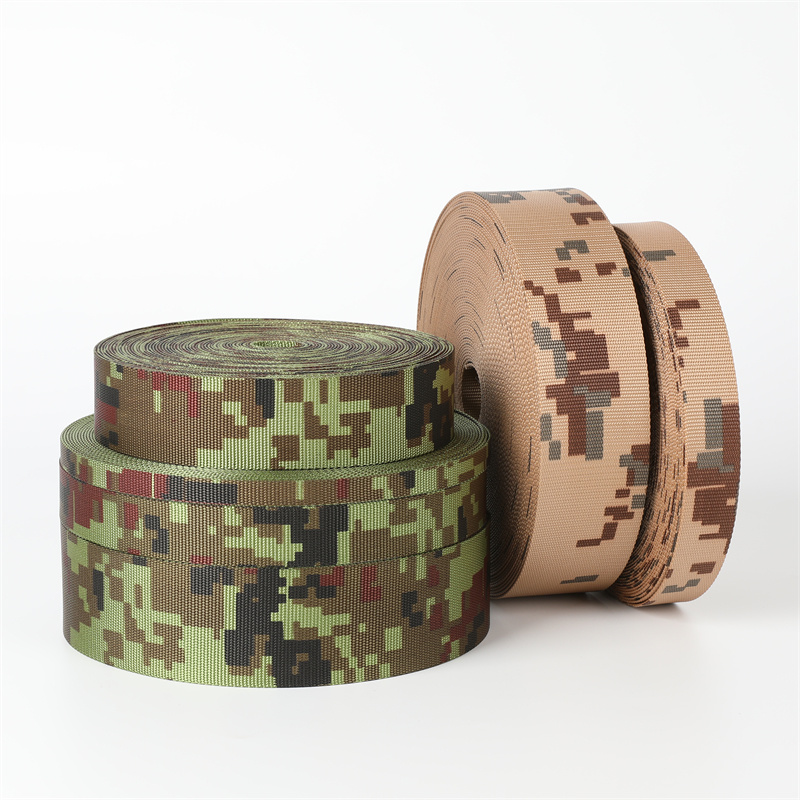How to Choose the Right Type of Nylon Webbing for Your Needs
How to Choose the Right Type of Nylon Webbing for Your Needs
Table of Contents
1. Introduction to Nylon Webbing
2. What is Nylon Webbing?
3. Types of Nylon Webbing
3.1 Commercial Grade Nylon Webbing
3.2 Military Grade Nylon Webbing
3.3 Heavy-Duty Nylon Webbing
3.4 Lightweight Nylon Webbing
4. Key Characteristics of
Aug 21,2025

How to Choose the Right Type of Nylon Webbing for Your Needs
Table of Contents
- 1. Introduction to Nylon Webbing
- 2. What is Nylon Webbing?
- 3. Types of Nylon Webbing
- 3.1 Commercial Grade Nylon Webbing
- 3.2 Military Grade Nylon Webbing
- 3.3 Heavy-Duty Nylon Webbing
- 3.4 Lightweight Nylon Webbing
- 4. Key Characteristics of Nylon Webbing
- 5. Applications of Nylon Webbing
- 6. How to Choose the Right Nylon Webbing
- 6.1 Consider the Strength Requirements
- 6.2 Evaluate the Environment
- 6.3 Determine the Width
- 6.4 Check for UV Resistance
- 7. Maintaining Your Nylon Webbing
- 8. Frequently Asked Questions
- 9. Conclusion
1. Introduction to Nylon Webbing
Choosing the right type of nylon webbing is crucial for a variety of applications, from outdoor gear to industrial uses. In this guide, we will explore the different types and characteristics of nylon webbing, ensuring you can make an informed decision tailored to your specific needs.
2. What is Nylon Webbing?
Nylon webbing is a versatile, durable material made from nylon fibers, known for its strength and flexibility. Often used in applications requiring high tensile strength, it is resistant to abrasion, mildew, and UV damage. This makes nylon webbing an ideal choice for harnesses, straps, belts, and various other products.
3. Types of Nylon Webbing
Understanding the different types of nylon webbing helps in selecting the right one for your needs.
3.1 Commercial Grade Nylon Webbing
Commercial grade nylon webbing is suitable for general-purpose applications. It provides solid strength and durability while maintaining a lightweight profile. This type is commonly used in crafting, outdoor gear, and simple straps.
3.2 Military Grade Nylon Webbing
Military-grade nylon webbing is designed to meet stringent military specifications. Offering increased strength and durability, it is often used in tactical gear, parachute applications, and heavy-duty straps. Its robustness makes it ideal for environments that demand reliability.
3.3 Heavy-Duty Nylon Webbing
Heavy-duty nylon webbing is engineered for extreme conditions. It boasts a high weight capacity and is perfect for applications such as towing, load securing, and climbing gear. If strength is your primary concern, this is an excellent choice.
3.4 Lightweight Nylon Webbing
As the name implies, lightweight nylon webbing offers a balance between strength and reduced weight. Commonly used in backpacking and camping gear, it’s perfect for applications where every ounce matters, without sacrificing durability.
4. Key Characteristics of Nylon Webbing
When choosing nylon webbing, it’s essential to consider its characteristics to ensure it meets your needs.
4.1 Tensile Strength
Tensile strength refers to the maximum load that the webbing can withstand before breaking. Different types of nylon webbing have varying tensile strengths, making it critical to choose one that meets your specific load requirements.
4.2 Abrasion Resistance
Nylon webbing is renowned for its abrasion resistance, allowing it to perform well in rugged environments. This characteristic ensures that the webbing lasts longer, particularly in high-friction applications.
4.3 UV Resistance
For outdoor applications, UV resistance is vital. Nylon webbing can degrade when exposed to sunlight over time. Choosing UV-resistant webbing extends the product's life when used outdoors.
4.4 Water Resistance
While nylon itself is not inherently waterproof, many nylon webbings are treated for water resistance. This characteristic is crucial for applications where exposure to moisture is expected.
5. Applications of Nylon Webbing
Nylon webbing is utilized in countless applications across various industries. Here are some common uses:
5.1 Outdoor Gear
From tents to backpacks and climbing harnesses, nylon webbing is widely used in outdoor gear due to its lightweight and durable nature.
5.2 Industrial Uses
Industries often require strong webbing for load securing, slings, and safety harnesses. The dependability of nylon webbing makes it a preferred choice in this sector.
5.3 Pet Accessories
For pet leashes and collars, nylon webbing provides durability and comfort, making it a popular choice among pet owners.
5.4 Fashion and Accessories
Nylon webbing is also used in various fashion items such as belts, bags, and straps. Its versatility allows for creative designs while maintaining strength.
6. How to Choose the Right Nylon Webbing
Selecting the right nylon webbing involves evaluating several factors to ensure it fits your specific needs.
6.1 Consider the Strength Requirements
Start by determining the weight or load that the nylon webbing will need to support. This will guide you in selecting a webbing type with the appropriate tensile strength.
6.2 Evaluate the Environment
Consider where the webbing will be used. If it will be exposed to sunlight or moisture, opt for UV-resistant and water-resistant options.
6.3 Determine the Width
Nylon webbing comes in various widths. Consider the application; a thicker webbing offers more strength, while a narrower webbing may be more suitable for lightweight tasks.
6.4 Check for UV Resistance
For outdoor applications, always verify that the nylon webbing is UV treated to prevent degradation from sun exposure.
7. Maintaining Your Nylon Webbing
Proper maintenance extends the life of nylon webbing. Follow these tips for optimal care:
7.1 Cleaning
Regularly clean your nylon webbing to prevent dirt and grime buildup. Hand washing with mild soap and water usually suffices.
7.2 Storage
Store nylon webbing in a cool, dry place away from direct sunlight to prevent UV damage. Properly coiling or rolling the webbing also prevents tangling and fraying.
7.3 Inspection
Regularly inspect your nylon webbing for signs of wear and tear. Any fraying, cuts, or discoloration indicates that it may need replacement.
8. Frequently Asked Questions
8.1 How strong is nylon webbing compared to other materials?
Nylon webbing generally has a higher tensile strength compared to polyester and polypropylene, making it suitable for heavy-duty applications.
8.2 Can nylon webbing be used for climbing?
Yes, certain types of nylon webbing are specifically designed for climbing, provided they meet safety standards for load-bearing.
8.3 Is nylon webbing affected by humidity?
While nylon is resistant to moisture, it can absorb water, which may affect its strength. However, treated nylon webbings can offer improved water resistance.
8.4 How do I know which type of nylon webbing to choose?
Consider your specific application, the weight it needs to bear, and environmental conditions to determine the best type of nylon webbing.
8.5 Can I dye nylon webbing?
Yes, nylon webbing can be dyed, but it's essential to use fabric dyes specifically formulated for nylon to achieve the best results.
9. Conclusion
Choosing the right type of nylon webbing is essential for ensuring safety, efficiency, and longevity in your applications. By understanding the types, characteristics, and maintenance of nylon webbing, you are well-equipped to make an informed decision tailored to your needs. Whether you need webbing for outdoor gear, industrial applications, or fashion items, the right nylon webbing can make all the difference.
PREVIOUS:
Related Posts
Contact Us
E-mail:
Phone/WeChat:
Factory Address:
No. 601 ShiXing Road, Jimei District, Xiamen, 361024, China







